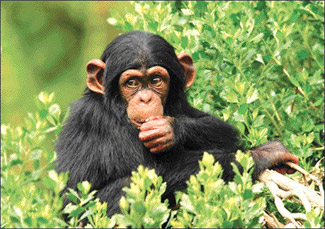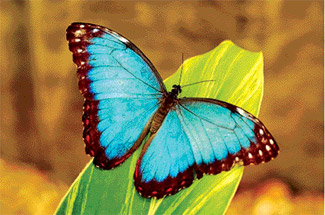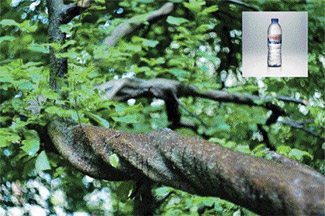|
Variety
Innovations inspired
by nature
Chimpanzees help discover new medicines:
 One-quarter
of modern medicines is derived directly from plants, and there are
hundreds of thousands of other plant species, each with dozens or
hundreds of unique chemical compounds that could also prove to be of
medicinal value. One-quarter
of modern medicines is derived directly from plants, and there are
hundreds of thousands of other plant species, each with dozens or
hundreds of unique chemical compounds that could also prove to be of
medicinal value.
If you wanted to discover more medicines ,where would you start
looking? It could take millions of years, literally, to sort through
this enormous variety of plants and plant compounds to find ones with
medicinal value. Fortunately, this is exactly what researchers have
discovered, that chimpanzees - over millions of years of evolutionary
time -have already done.
By observing how chimps and other non-human species cope with
illness, researchers have acquired leads on plants with promising
medical applications to human health.
Trees from the Vernonia genus, for example, which chimpanzees
regularly seek out when ill, have been found to contain chemical
compounds that show promise in treating parasites such as pinworm,
hookworm, and giardia in humans.
Colour without
pigments or dyes, as in forest butterflies
The synthetic pigments and dyes with which we create colour in our
paints and plastics often consist of heavy metals that are mined or
other chemicals that are toxic to human health and the environment.

An alternative approach to creating colour has recently been inspired
by the stunning wings of blue morpho butterflies (Morpho spp.),
butterflies of Central and South America that signal to one another in
their forest habitats using their iridescent wings.
Their stunning colour is not the result of pigments or dyes. In fact,
theres no colour in them at all. Instead, their wing color is a play of
light, created by microscopic transparent layers on the wing's scales
which cancel out reflected non-blue light waves, while reinforcing blue
ones. So-called 'structural colour' is in fact found throughout the
natural world.
New cell phone and other electronic displays inspired by butterfly
wings are visible in bright sunlight, and use only a fraction of the
battery power of conventional displays. Pigment-free cosmetics whose
colour comes from harmless structures mimicking those found in nature
have also been createdl. And one day, you may be able to change the
colour of the walls in your house simply by turning a dial.
Light-but-strong
products based on the spiral structures in trees
The new water bottle from a plastic manufacturing company now uses
less plastic than any previous plastic water bottle, while being just as
strong.
 To
design the bottle,the designers drew inspiration from spiral structures
commonly found in trees, an idea they became aware of through
www.AskNature.org, an online database of nature˜s design strategies.
Spiralling in trees is thought to improve mechanical performance under
compression and tension. To
design the bottle,the designers drew inspiration from spiral structures
commonly found in trees, an idea they became aware of through
www.AskNature.org, an online database of nature˜s design strategies.
Spiralling in trees is thought to improve mechanical performance under
compression and tension.
The designers adapted the idea by developing helical structures whose
inclination angles vary according to the amount of vertical and
horizontal strength needed at a certain surface curvature of the bottle.
The resulting design saves 250 tons of raw material per year and the
energy that otherwise would be used to recycle that plastic into new
bottles. |

